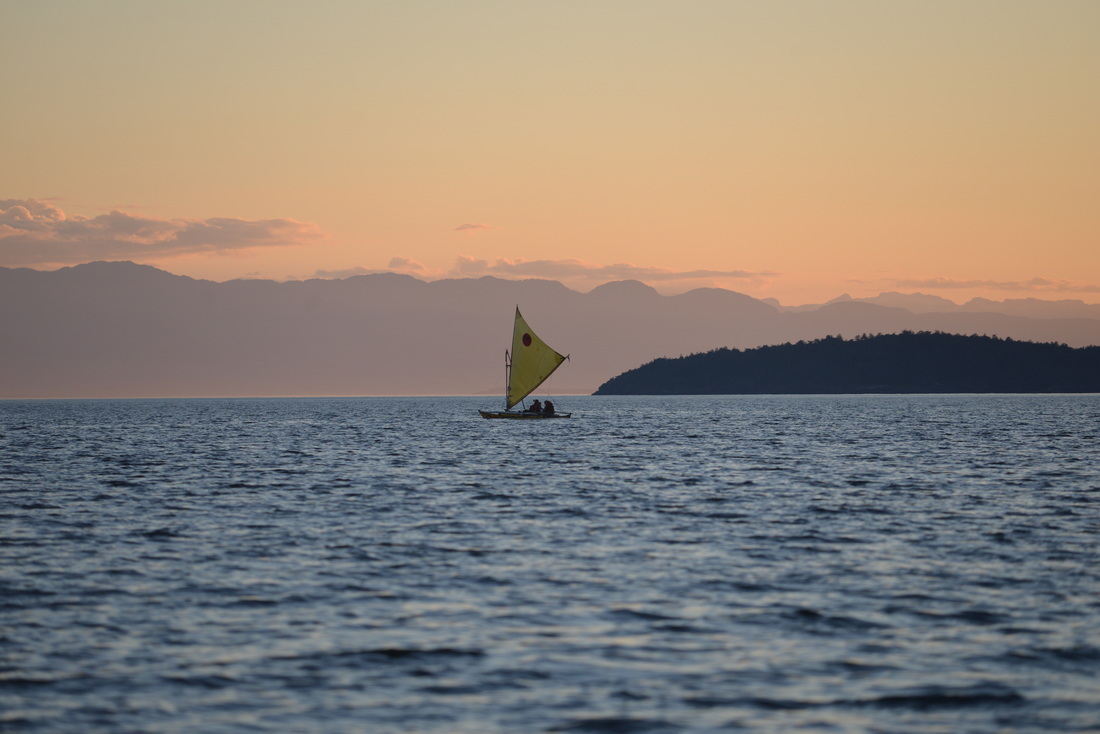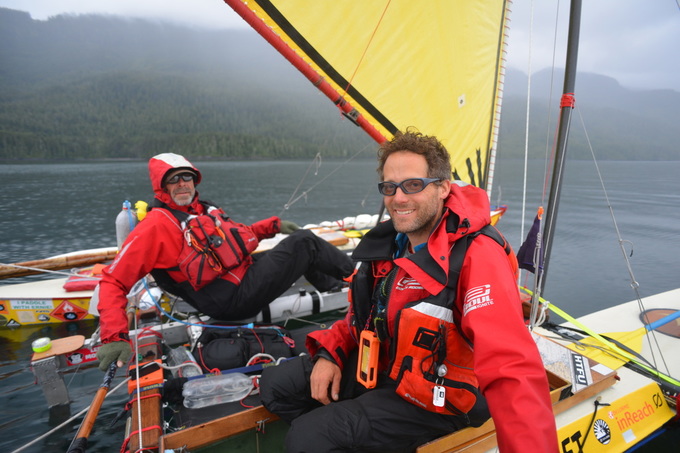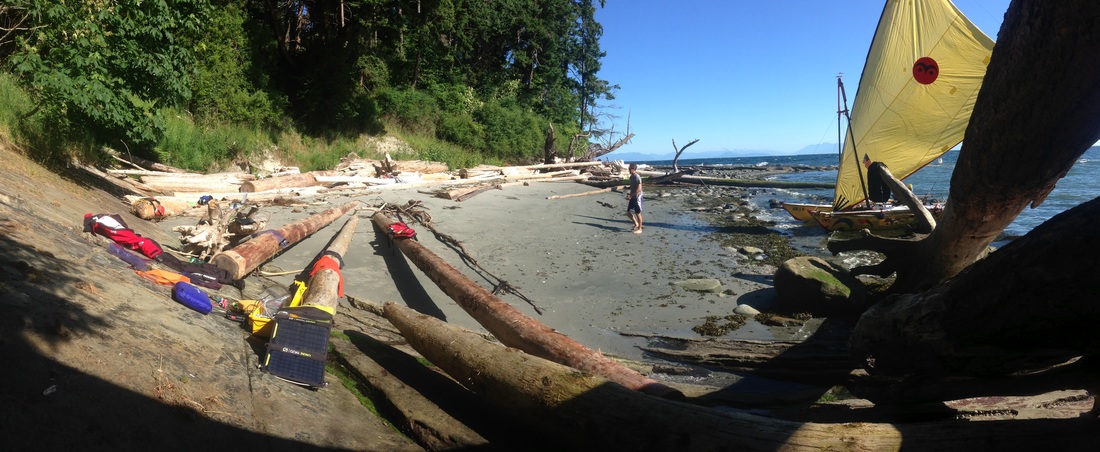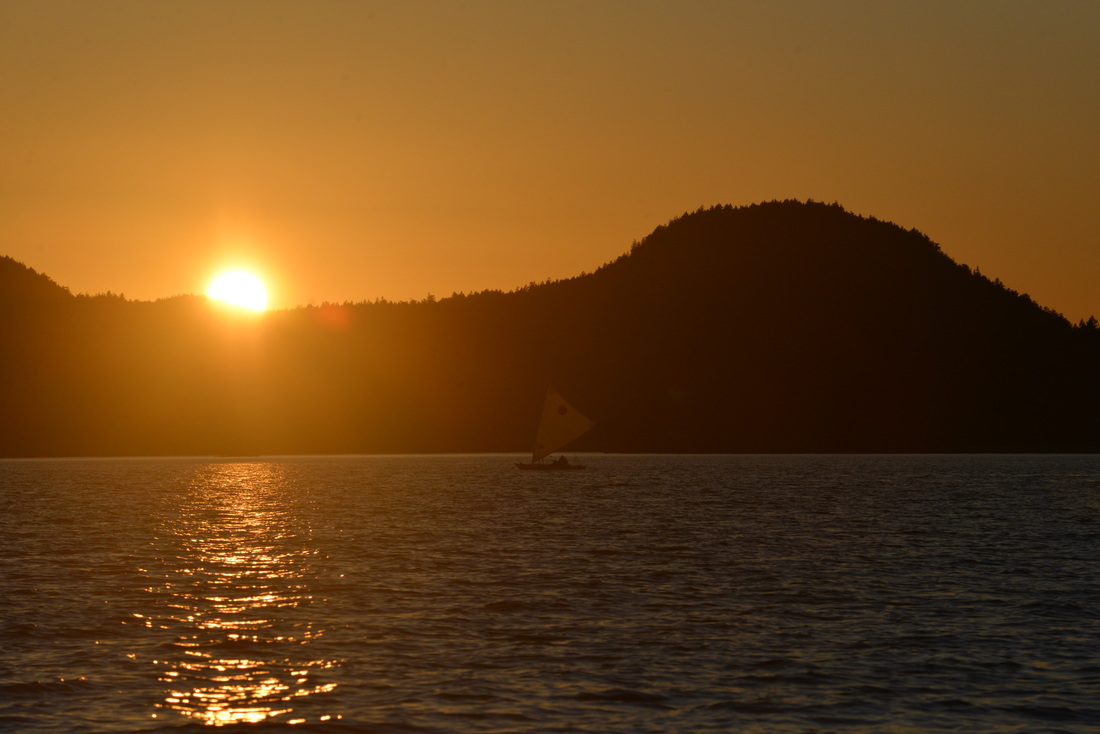ASC Microplastics Adventurer
Up from behind, the bigger boats were pouring on the canvas, and soon they grew from pinpricks on the horizon to distinguishable teams gaining on us. After three days, the Race to Alaska fleet was now at the southern end of the Gulf Islands, between Victoria Island and Vancouver, British Columbia.
The six hours of southerlies out of Victoria were our last, and as the sun rose the next morning, the winds swung to the north and started cranking. By noon, the swells were over six feet, with winds gusting to 40 knots. Stuff started to break.
The goal: Be the first from Port Townsend, Washington, to Ketchikan, Alaska. The prize: $10k nailed to a tree, a set of steak knives for second place, and bragging rights to the rest.
We, on the other hand, were pinned down in Nanaimo fixing and then re-breaking parts as we waited out the winds. After a little rest, we took our second water sample for the ASC Microplastics Project.
Just north of Nanaimo is a beach renowned for its winds. The beach, the town and the winds are all known as Qualicum. We needed to get past this point if we wanted to get back in the race. But after almost five days, we were still stuck in the lee of Protection Island at the entrance to Nanaimo Harbour. Elsie Piddock was less than a day from Ketchikan.
After finally escaping Nanaimo and now sailing with Teams Boatyard Boys and Puffin, we began making progress. Soon we were catching up with others. Then we started passing retired teams headed south, but we had a new problem—time. We had negotiated 14 days leave plus an extra week with to complete the race. We’d already been out 17 days, had covered 375 miles and had 400 left to go.
The next morning looked good for heading north. Up, fueled with coffee and a healthy trepidation of what the Narrows would throw at us, we headed out into a rushing flood current then into a blind turn that puts you in what can only be described as an awesome mind boggling maelstrom of current.Captain George Vancouver called it “one of the vilest stretches of water in the world.” Until 1958, big commercial vessel traffic had no choice other than go through Seymour Narrows and past Ripple Rock, and 119 vessels had sunk trying to transit here. Today Ripple Rock is no more, having been annihilated with 1,375 tons of explosives. Today the current runs like a tongue of fire right up the middle of the narrows. Hit it right, stick to the middle, avoid the whirlpools and you’re on your way. Hit it wrong and it will suck you under or bounce you off the cliffs.
Just north of here is a large bay where you can wait out weather or a foul tide. Now closing on late afternoon, we eddied out, had a celebratory drink, a meal and a nap. Here we gathered our third water sample.
As the light dimmed under a drizzly sky, a pod of seven orcas swam past, headed north. Within minutes, the water ahead of us exploded when the orcas came upon their prey: a pod of 100 Pacific white-sided dolphins. Orcas lunged clear out of the water, hung in midair and then crashed back down as they attacked. Then, as quick as it had started, it was over.
We sat for a while discussing what we had just witnessed, and then pedaled on in the dying wind to the narrow entrance of Telegraph Cove. For Team Searunners, the 2015 R2AK was over.




